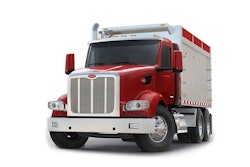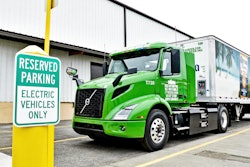Are you one of those drivers who immediately reacts to new sounds coming from your truck?
The more experienced drivers have miles of collected memories to draw on so they know that a particular noise is an alternator about to fail, some issue with a brake pad, an engine mount gone bad, or just a pebble stuck in the tire tread.
Newer drivers just get to worry and hope someone more experienced can give them some advice.
The same is true with media noise.
Opinion, misinformation, reason and fact compete daily for attention. Often the fight takes place simply at the headline level.
Ask your favorite AI information generator what makes a good headline and you can get this definition (this one is from Bing’s Co-Pilot):
A headline serves as the first impression for readers, enticing them to engage with an article or story. Crafting an effective headline involves several key principles:
1. Summarize the Subject Matter: Whether it’s for an online news site, blog post, or print publication, a headline should succinctly convey the main point of the story. Boil down the narrative to its essential elements and incorporate them into the headline to pique readers’ interest and encourage further reading.
2. Find the Hook Without Spoiling the Ending: A good headline grabs attention without revealing the most exciting part of the story. It should intrigue readers, compelling them to read on until they reach the end. Avoid misleading clickbait headlines that don’t accurately represent the content, as this can harm your publication’s integrity.
3. Be Straightforward: While eye-catching headlines are essential, avoid writing vague headlines that mislead readers. Instead, provide clarity and accuracy. Misleading headlines can frustrate readers and erode trust.
4. Make an Emotional Appeal: Especially in feature articles, where tone and narrative play a significant role, your headline should pack a punch or pose a question that readers want your story to answer. Emotional appeal draws readers in and keeps them engaged throughout the piece.
5. Proofread and Fact-Check: Always review your headlines for typos, missing words, and proper punctuation. If you use synonyms from a thesaurus, ensure they convey the correct meaning. Accuracy matters, even in a concise headline.
The next headline you read, ask yourself if it lives up to this definition.
The difference between a good headline and a great one is like airplane landings: A good one means you can walk away. A great one means you can fly the plane the next day.
A lot of biased authors don’t seem to care about flying the plane the next day. The focus is on the moment and grabbing the attention. Often the headline engages the magician’s talent of misdirection. It often employs the art of the con, telling you what you want to hear rather than provide accurate, factual information. Sometimes it is just plain propaganda.
Misinformation is everywhere. Biased reporting by vested interests is so prevalent, they now give them a job title: “influencers.” The basic premise of propaganda is if you say something enough times it eventually becomes truth.
In the end, though, you still have the ultimate power to decide for yourself.
A good con can succeed when those who are impacted never admit to being conned. Either they never figure it out, or they are too embarrassed to admit it. Sometimes the herd mentality forces them into silence among others also taken in by the ploy.
Assailing informants that are counter to the con is a key method of a con’s success. Discrediting alternative perspectives and those who espouse them is crucial to the life of a con. The longer the truth can be clouded, the longer the con can stay alive.
I toyed with filling this blog with sarcasm, but I’ve found not everyone appreciates sarcasm. Or understands it. I toyed with claiming certain industry groups were advocating for a return to steam powered trucks fueled by manure as the most viable way to meet emission standards. Clearly, infrastructure and supply would not be a problem. I hypothesized the return of Stanley Steamer to the ranks of OEMs. The mantra I thought about was “the old ways are the best ways.” Some advocacy groups, sadly, probably would feel this was right in line with their objectives and might actually quote me to support their arguments.
The heart of the matter is that we each are our own quality control manager when it comes to information. The recent travails of a major airplane manufacturer with respect to missing door bolts can be used as a metaphor, along with a slight modification to a Ronald Reagan quote: "Trusting but not verifying can lead to future disappointments."
The next headline you read about the future of trucking, ask yourself is it a good one or a great one.
That whine you hear when reading the news is a sign that perhaps something isn’t right. Maybe you are experienced enough to know if it is a big or little issue. Others may also be hearing that whine, and don’t know enough to make that call. Your experience and voice can matter beyond just you.













